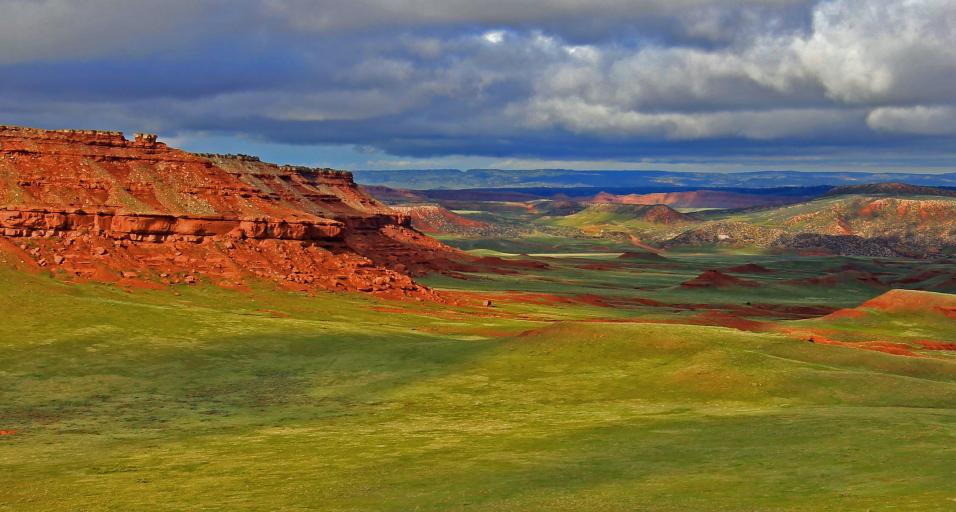Investing for wildlife
I’ve heard many people say that Wyomingites have been practicing social distancing our whole lives. That’s likely true. Being able to get away and fish for hours without seeing a soul is one reason residents live here and others visit often. These last few months made us all appreciate Wyoming’s abundant opportunities to hunt, fish and be outside. It’s important to maintain those. Thanks to sportsmen and women, the Wyoming Game and Fish Department has the resources to continue this work.
Many agencies are turning eyes toward their budget, and we are too. The good news is our funding currently remains relatively stable. But, we are planning to make reductions as we look to our future and consider new uncertainties.
While we are a state agency, Game and Fish does not receive appropriated state funds. The majority of funding for Game and Fish comes from hunters and anglers through license sales and excise taxes on hunting, fishing and boating equipment — about 85 percent.
The Wyoming Game and Fish Commission approves the annual budget in July. The upcoming standard budget is about $83.2 million. We manage this budget with the same care we do our family checkbooks. Over the last several years, the Commission has been judicious with funding, putting aside money and making smart decisions on where to spend. They have invested wisely to address important wildlife needs, and have ensured we are prepared for the unexpected.
We have two aspects to our budget. The standard budget runs the day-to-day work of Game and Fish at nine offices throughout the state, including 27 internal programs focused on conservation efforts. This pays for growing fish to stock waters throughout the state, educational specialists who teach kids, game wardens and biologists who manage and protect wildlife, printed regulation booklets and aquatic invasive species inspectors to name a few. We also have funding for one-time investments. Those are projects like a new Cody regional office to better serve the community, wildlife crossing projects to reduce wildlife-vehicle collisions, access for sportspeople and habitat improvement projects to help wildlife populations.
Sportspeople’s continual appreciation of wildlife has allowed the Commission to make significant commitments and long-term investments for fish, wildlife and the public. That’s a value that has remained for more than 120 years and will continue. It’s why hunting opportunities remain unparallelled in quality and adventure; why the Miracle Mile still lives up to its name and why Wyoming has kept sage grouse from being listed as an endangered species.
Because of hunters, anglers, trappers and boaters we can continue our work. As we carry out this charge, it's our duty to be accountable to sportspeople and use your support wisely. We strive to tell you how in our publications, website and emails. And, you can always watch the Game and Fish Commission meetings online if you can’t attend in person.
Thank you for buying a hunting or fishing license or conservation stamp and supporting wildlife conservation.
-Brian Nesvik is the director of the Wyoming Game and Fish Department. Learn more about Game and Fish at wgfd.wyo.gov.
Many agencies are turning eyes toward their budget, and we are too. The good news is our funding currently remains relatively stable. But, we are planning to make reductions as we look to our future and consider new uncertainties.
While we are a state agency, Game and Fish does not receive appropriated state funds. The majority of funding for Game and Fish comes from hunters and anglers through license sales and excise taxes on hunting, fishing and boating equipment — about 85 percent.
The Wyoming Game and Fish Commission approves the annual budget in July. The upcoming standard budget is about $83.2 million. We manage this budget with the same care we do our family checkbooks. Over the last several years, the Commission has been judicious with funding, putting aside money and making smart decisions on where to spend. They have invested wisely to address important wildlife needs, and have ensured we are prepared for the unexpected.
We have two aspects to our budget. The standard budget runs the day-to-day work of Game and Fish at nine offices throughout the state, including 27 internal programs focused on conservation efforts. This pays for growing fish to stock waters throughout the state, educational specialists who teach kids, game wardens and biologists who manage and protect wildlife, printed regulation booklets and aquatic invasive species inspectors to name a few. We also have funding for one-time investments. Those are projects like a new Cody regional office to better serve the community, wildlife crossing projects to reduce wildlife-vehicle collisions, access for sportspeople and habitat improvement projects to help wildlife populations.
Sportspeople’s continual appreciation of wildlife has allowed the Commission to make significant commitments and long-term investments for fish, wildlife and the public. That’s a value that has remained for more than 120 years and will continue. It’s why hunting opportunities remain unparallelled in quality and adventure; why the Miracle Mile still lives up to its name and why Wyoming has kept sage grouse from being listed as an endangered species.
Because of hunters, anglers, trappers and boaters we can continue our work. As we carry out this charge, it's our duty to be accountable to sportspeople and use your support wisely. We strive to tell you how in our publications, website and emails. And, you can always watch the Game and Fish Commission meetings online if you can’t attend in person.
Thank you for buying a hunting or fishing license or conservation stamp and supporting wildlife conservation.
-Brian Nesvik is the director of the Wyoming Game and Fish Department. Learn more about Game and Fish at wgfd.wyo.gov.
Sara DiRienzo (307) 777-4540

